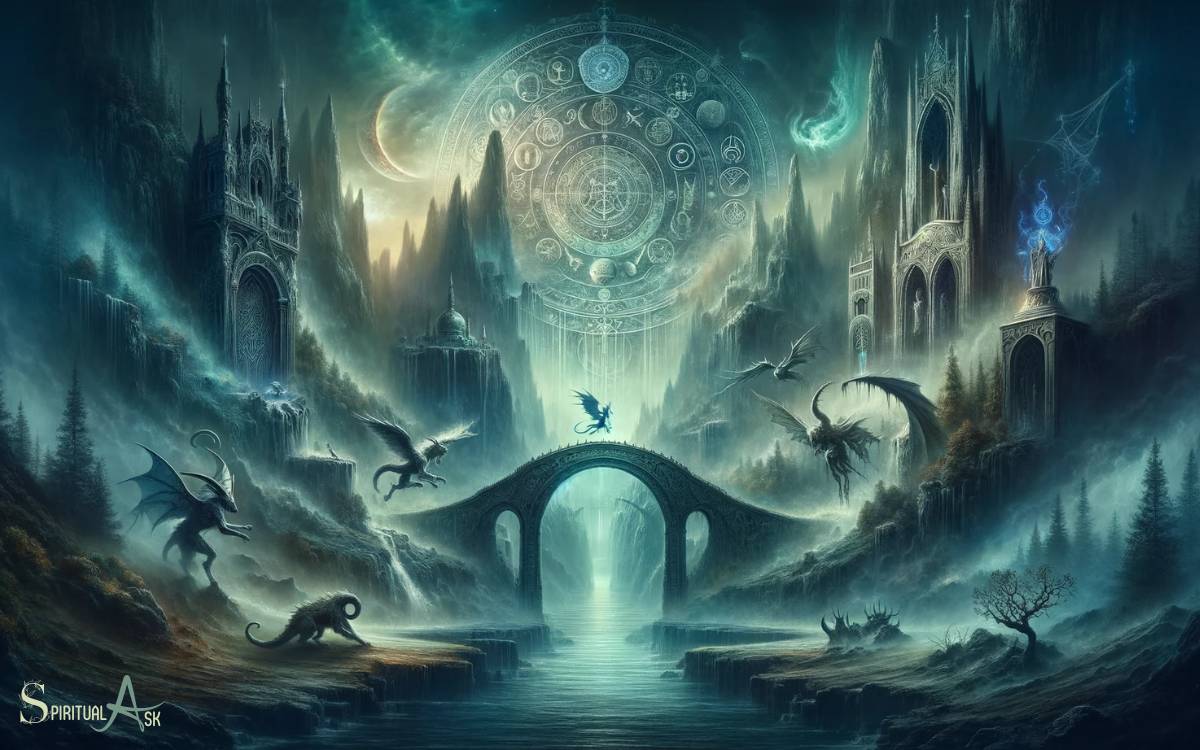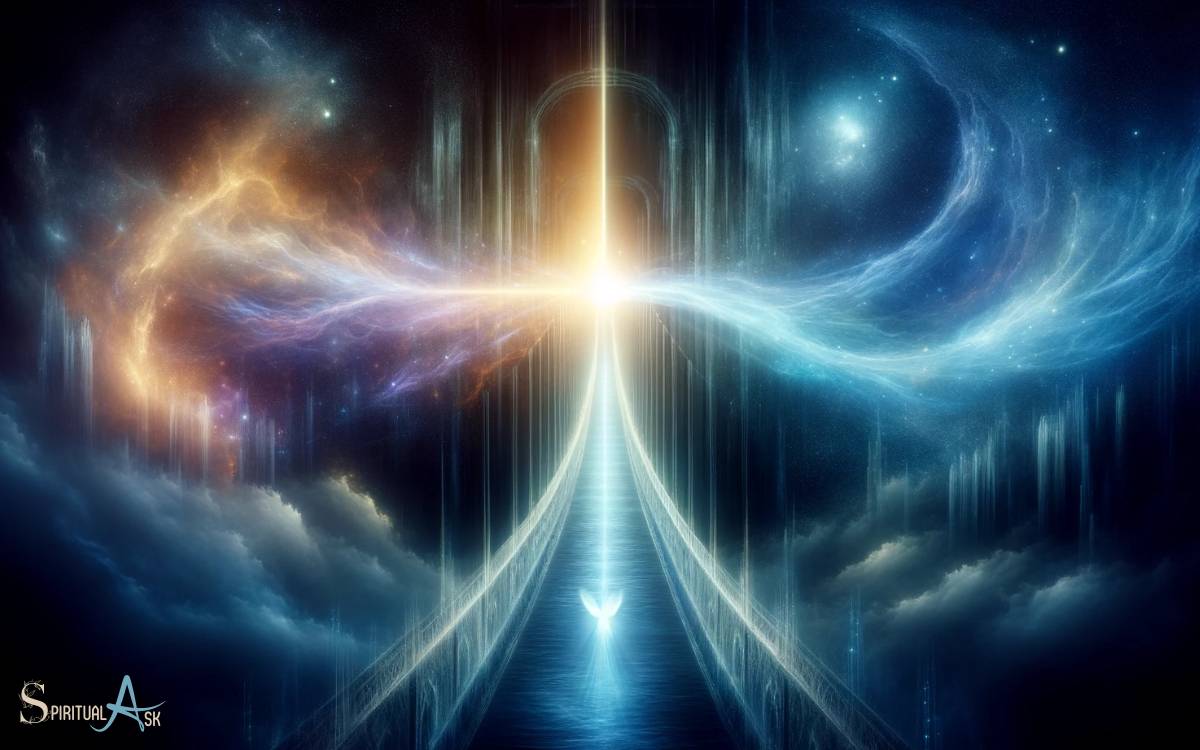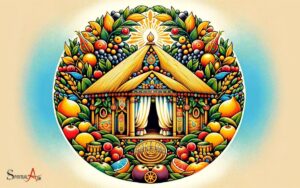Spiritual Symbolism of a Bridge: Transition, Connection!
The bridge is a powerful spiritual symbol that represents transition, connection, and the journey between various stages of life.
In many cultures, bridges are seen as paths to transformation and enlightenment, serving as a link between the physical world and the spiritual or divine realms.
Bridges have been incorporated into spiritual symbolism across different religions and mythologies.
They often signify progress, suggesting that an individual is moving from one point in their life to another, crossing over obstacles or challenges.
Spiritually, bridges can symbolize:
For example, in Norse mythology, the Bifröst is a burning rainbow bridge that connects Midgard (the realm of humanity) and Asgard (the realm of the gods), serving as a conduit for movement and communication between gods and mortals.
Embracing the spiritual symbolism of a bridge encourages one to consider the transformative power of traversing life’s challenges and the beauty of connecting with one’s higher self.

Key Takeaway
Historical Significance of Bridges
As I delve into the historical significance of bridges, it is important to recognize that these structures have played a crucial role in the development of civilizations.

Bridges have been integral in connecting people and cultures, enabling trade, and fostering the exchange of knowledge and ideas. They have facilitated the expansion of empires, the growth of cities, and the exploration of new lands.
The construction of bridges has not only showcased engineering prowess but has also served as a testament to human ingenuity and perseverance.
From ancient stone arch bridges to modern steel suspension bridges, the evolution of bridge design reflects the advancement of technology and the adaptability of societies.
Understanding the historical context of bridges provides insight into the interconnectedness of human history and the enduring impact of these remarkable structures.
Bridges in Mythology and Folklore
Bridges have always held significance in mythology and folklore, serving as powerful symbols in various cultures.

From the cultural symbolism of bridges as connections between worlds to the mythical guardians that protect these structures, their presence in stories and legends is rich and diverse.
Exploring the spiritual and symbolic meanings of bridges in these contexts can offer profound insights into their deeper significance.
Cultural Bridge Symbolism
Growing up, I always looked forward to hearing stories that featured bridges as powerful symbols in mythology and folklore. Bridges often serve as a powerful cultural symbol, representing the connection between different worlds or realms.
In various mythologies, bridges are depicted as the link between the mortal world and the divine, enabling gods, spirits, or the deceased to cross between realms.
For instance, in Norse mythology, the Bifröst bridge connects the realm of the gods with the realm of humans.
Additionally, bridges in folklore often symbolize transitions or transformations. They are portrayed as places where characters undergo trials or make pivotal decisions.
These cultural representations of bridges continue to enrich our understanding of their symbolic significance and their role in connecting different aspects of the human experience.
Mythical Bridge Guardians
In my exploration of the spiritual symbolism of bridges, I found myself captivated by the role of mythical bridge guardians in various mythologies and folklore.
These guardians are often depicted as supernatural beings or creatures tasked with protecting the bridge and ensuring safe passage for those who seek to cross.
- In Norse mythology, the Bifröst bridge is guarded by the god Heimdall, who prevents the giants from entering the realm of the gods.
- In Japanese folklore, the famous bridge to the realm of the dead, called the Sanzu River, is guarded by the deity named Jizo.
These mythical guardians not only add an element of mystique to the bridge but also serve as protectors, emphasizing the significance of safe passage and the transition between realms.
Bridge as Connection
Exploring the spiritual symbolism of a bridge, I was fascinated by the rich presence of bridges in mythology and folklore, connecting diverse realms and embodying significant transitions.
In various cultures, bridges are often depicted as connections between the earthly and spiritual realms, symbolizing the journey from one state of being to another.
Below is a table that illustrates the representation of bridges as connections in different mythologies and folklores:
| Mythology/Folklore | Bridge Symbolism |
|---|---|
| Norse | Bifrost, the rainbow bridge, connects realms |
| Greek | Charon’s boat ferrying souls across the river Styx |
| Japanese | Taikobashi, the bridge to the afterlife |
| Hindu | The bridge to Lanka in the epic Ramayana |
| Celtic | Bridges as gateways to the Otherworld |
These examples demonstrate how bridges serve as powerful symbols of connection and transition in various cultural narratives, offering insights into the universal significance of bridging different worlds and states of being.
Symbolism of Crossing and Transition

As I reflect on the symbolism of crossing and transition, it becomes evident that a bridge represents the journey from one state to another, embodying the process of transformation and change.
Crossing a bridge signifies leaving behind the familiar and venturing into the unknown, symbolizing a transition from one phase of life to another. It embodies the courage and willingness to embrace change, even when it may seem daunting.
The act of crossing a bridge can also signify leaving behind the past and moving towards a new future, signifying growth and personal development. It serves as a reminder that transitions are not always easy, but they are essential for progress and self-discovery.
Ultimately, the symbolism of crossing and transition through a bridge encourages us to embrace change with an open heart and mind.
Bridges as a Metaphor for Spiritual Growth
How does crossing a bridge symbolize personal growth and transformation on a spiritual level? Just as a bridge connects two separate places, spiritual growth involves bridging the gap between our current and desired spiritual states.

The act of crossing a bridge signifies leaving behind the old and embracing the new, mirroring the process of shedding limiting beliefs and embracing higher truths on our spiritual journey.
Each step taken across the bridge represents progress and overcoming obstacles, reflecting the challenges and breakthroughs that accompany spiritual growth.
The bridge serves as a powerful metaphor for transcendence, as we move towards greater understanding, wisdom, and enlightenment.
In crossing the bridge of spiritual growth, we evolve and transform, becoming more aligned with our true selves and the divine. This journey is not always easy, but it leads to profound inner expansion.
As we explore the symbolism of bridges, it’s essential to recognize their significance as connections between worlds.
Bridges as Connections Between Worlds

I’ve always found bridges to be fascinating, serving as conduits between the physical and metaphysical realms.
They are not just physical structures but also symbolic representations of connections between different worlds.
Here’s a table to evoke emotion in the audience:
| Physical Realm | Metaphysical Realm | Symbolism |
|---|---|---|
| Earth | Heaven | Spiritual ascent |
| Past | Future | Transition |
| Mundane | Divine | Unity |
| Known | Unknown | Exploration |
| Limitation | Freedom | Liberation |
This symbolism offers a profound perspective on bridges as more than just physical structures but as gateways to different worlds and experiences.
Bridges as Representations of Overcoming Challenges
Continuing from the previous subtopic, overcoming challenges is a fundamental aspect of the spiritual symbolism of a bridge.

When I think about bridges as representations of overcoming challenges, I’m reminded of how they enable us to move from one place to another, transcending obstacles such as rivers, canyons, or valleys.
In a spiritual sense, bridges reflect our ability to navigate life’s difficulties, providing a pathway to progress and growth.
They signify resilience, determination, and the capacity to overcome barriers. Just as a bridge spans a chasm, we too can conquer our personal struggles and emerge stronger on the other side.
The bridge becomes a metaphor for our journey, reminding us that despite the challenges we face, we have the strength and courage to prevail.
The Spiritual Essence of Bridge Architecture
As I explore the spiritual essence of bridge architecture, it becomes evident that the design and structure of bridges serve as tangible representations of our ability to overcome obstacles, thus deepening the symbolism of transcending life’s challenges.

The arches, pillars, and spans of a bridge symbolize the strength and resilience needed to navigate life’s journeys. The upward-reaching arches convey a sense of upliftment and hope, while the sturdy pillars signify support and stability. Additionally, the spans of a bridge represent the connections and relationships that help us cross over from one phase of life to the next. Together, these elements come together to form a powerful metaphor for the challenges and triumphs we encounter. Moreover, the spiritual symbolism of anchors serves as a reminder to remain grounded and secure, even in the midst of life’s storms.
The expansive spans evoke a feeling of connection and unity, reflecting the human spirit’s capacity to bridge divides and forge connections.
The intricate and deliberate design of bridges mirrors the intentional effort required to overcome obstacles and build pathways to new possibilities.
In essence, the spiritual essence of bridge architecture embodies the human spirit’s innate ability to overcome adversity and create pathways to a brighter future.
Conclusion
The spiritual symbolism of bridges spans across cultures and time. An interesting statistic to note is that there are over 600,000 bridges in the United States alone, serving as physical and metaphorical connections for people and ideas.
Whether in mythology, folklore, or as architectural marvels, bridges continue to represent the journey of crossing and transition, spiritual growth, and the ability to overcome obstacles in our lives.






